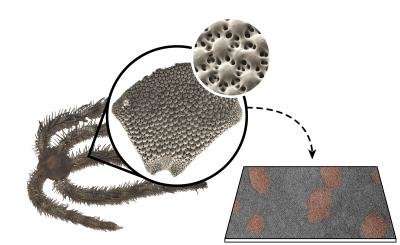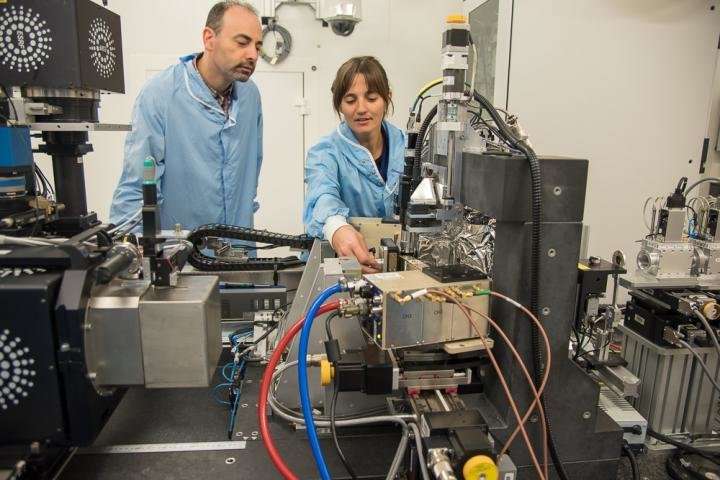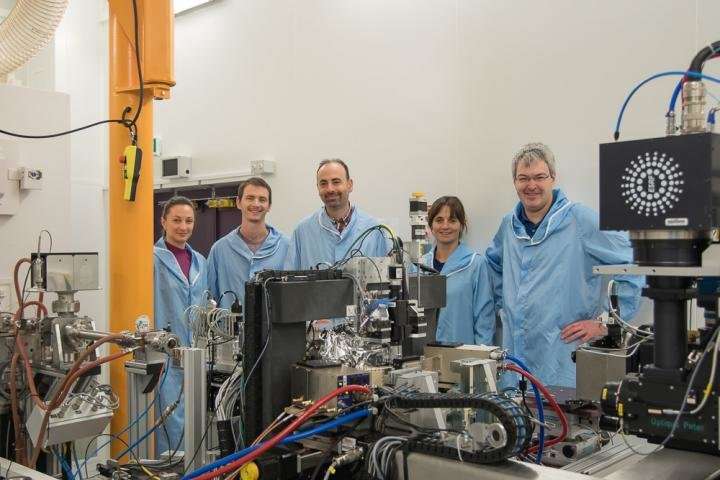Brittle starfish shows how to make tough ceramics

An international team lead by researchers at Technion-Israel Institute of Technology, together with colleagues from the European Synchrotron, Grenoble, France, have discovered how an echinoderm called Ophiocoma wendtii, known as a brittle star, can create material like tempered glass underwater. The findings are published in Science and may open new bio-inspired routes for toughening brittle ceramics in various applications that span from optical lenses to automotive turbochargers and even biomaterial implants.
Hundreds of focal lenses are located on the arms of brittle star. These lenses, made of calcium carbonate, are powerful and accurate, and the study of their crystalline and nanoscale structure has occupied Boaz Pokroy and his team, from the Technion-Israel Institute of Technology, for the past three years. Thanks to research done on three ESRF beamlines, ID22, ID13 and ID16B, among other laboratories, they have figured out the unique protective mechanism of highly resistant lenses.
As an example, take tempered glass. It is produced by exerting compressive pressure on the glass which compresses it and leaves it more compact than in its natural state. Glass tempering is performed by rapidly heating and then rapidly cooling the material. In this process, the outside of the material cools more quickly than the inside and thereby compresses the inside. Ophiocoma wendtii lenses are created in the open sea, at room temperature, unlike tempered glass. "We have discovered a strategy for making brittle material much more durable under natural conditions. It is 'crystal engineering," and tempering without heating and quenching, a process that could be very useful in materials engineering," explains Pokroy.

The formation of calcite lenses was discovered thanks to a long series of experiments at the ESRF, and the Titan transmission electron microscope at the Technion. "When we first came to the ESRF we didn't expect our research to reach these results," says Pokroy. The team came first to ID22, where they used powder X-ray diffraction to look into the material in a powder form while heating it. "We understood that we had nanodomains after this experiment, so we did some transmission electron microscopy at home, then came to ID13 to map the nanodomains and finally to ID16 to do tomography on how the different particles arrange themselves in different layers," he adds.

The international researchers discovered that the crucial stage in the process of lens formation is the transition from the amorphous phase—the phase between liquid and solid—to the crystalline phase. At this stage, calcite nanoparticles, which are rich in magnesium and characterized by a relatively low density, separate from the rest of the material. The difference in concentration of magnesium in the calcite particles causes various degrees of hardness, density, and pressure in different regions of the material. Magnesium-rich particles press on the inner part of the lens as it crystallizes and "temper" it into a clear and tough crystalline material.
"Nature exhibits tremendous creativity in improving the organism's abilities in various contexts such as strength, sensing, and self-defense. Here, too, in the process of creating hardy and precise transparent lenses, we see tremendous efficiency in the use of existing raw materials under conditions in the natural environment." Engineers now can use this newly discovered biostrategy in toughening and strengthening synthetic ceramic materials in various applications that span from optical lenses to automotive turbochargers and even biomaterial implants.
More information: Iryna Polishchuk et al. Coherently aligned nanoparticles within a biogenic single crystal: A biological prestressing strategy, Science (2017). DOI: 10.1126/science.aaj2156
Journal information: Science
Provided by European Synchrotron Radiation Facility




















